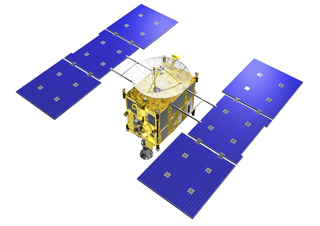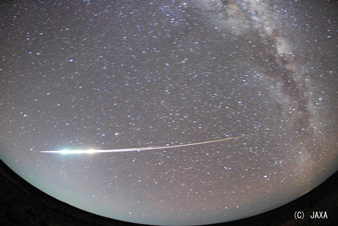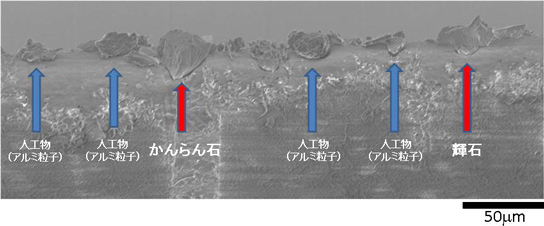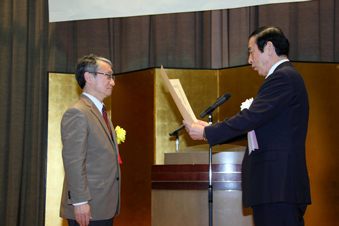The HAYABUSA asteroid explorer (refer to Diagram 1) was launched on May 9, 2003 from the Uchinoura Space Center in Kagoshima Prefecture. It achieved its goal of arriving at the Itokawa asteroid located 300 million kilometers from the Earth, and performing scientific observations. As a result, its mission was featured in the American scientific magazine “Science” as the first asteroid explorer to illustrate various new findings about asteroids including its gravity and surface conditions.
The HAYABUSA returned to Earth after its roughly 7-year journey on June 13, 2010 and completed its operation by dropping its onboard capsule in Australia. The explorer’s roughly 600 million kilometer long travel through space was not without complications, as it faced numerous instances of malfunctions in its ion engine as well as communication system failures. It was, however, the dedication and ingenious work by the HAYABUSA team of researchers and technicians who overcame every obstacle and secured its safe return which has gathered high acclaim by the nation. (refer to photo 1)
The capsule which returned to Earth was immediately moved to the Japan Aerospace Exploration Agency (JAXA), and investigated at the curation facility located within the JAXA Sagamihara campus in Kanagawa prefecture. In July 2010, particles were found inside the capsule (refer to photo 2). These material samples were further analyzed by an international team of experts, and in November 2010, the team confirmed that the particles definitely came from the Itokawa asteroid. This makes the HAYABUSA the first asteroid explorer ever in history to gather samples from an extra-terrestrial celestial body other than the Moon, making it a tremendous scientific significance for humanity. From January 2011, the particles are further being analyzed at Universities and by the Spring-8, a large synchrotron radiation facility, raising hope of further shedding light on the mysteries of our solar system. The renowned American magazine “Science” issued on August 26,2011 featured the HAYABUSA asteroid explorer. The article reveals outstanding results of the particles brought back by the explorer.
As study on the analysis of the particles brought back by the capsule continues, the capsule and related materials have also been on display to the public from August 2010. The display’s continuing popularity not only shows its scientific significance, but all shows the high level of national interest. Three films featuring the story of the HAYABUSA are being released between October 2011 and March 2012.
Marking the HAYABUSA’s brilliant success, former MEXT Minister Yoshiaki Takagi and the former Minister of Space Development Banri Kaieda presented a letter of appreciation to the 119 private companies and universities who participated in this project . (Photo 3)
HAYABUSA’s achievement has also been a chance for Japan to contribute to the international community as well as appeal Japan’s top-level science and technology to the world. Some such examples include: former Prime Minister of Australia Kevin Rudd and the former Prime Minister Naoto Kan’s discussion of the HAYABUSA over the phone, former MEXT Deputy Minister Ryuzo Sasaki’s presentation of a model HAYABUSA figure to the Australian government, and the HAYABUSA capsule displayed for prime ministers at an APEC meeting.

Diagram 1 Drawing of the HAYABUSA asteroid explorer

Photo 1HAYABUSA fireball upon the capsule’s entry into Earth
(Photo provided
by JAXA).

Photo 2 Photo by electron microscope of materials retrieved by the HAYABUSA
(Photo
provided by JAXA)

Photo 3 Ceremony for people who served under the HAYABUSA project (Yoshiaki Takagi Minister (right), Dr. Kawaguchi m JAXA, (left)
Contacts
Space and Aeronautics Policy Division, Research and Development Bureau
(Space and Aeronautics Policy Division, Research and Development Bureau)




